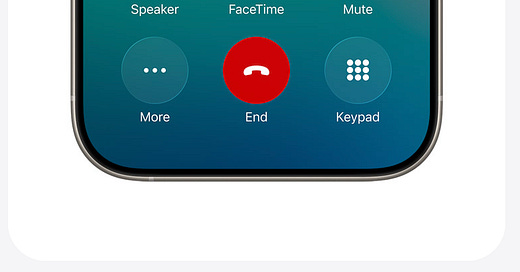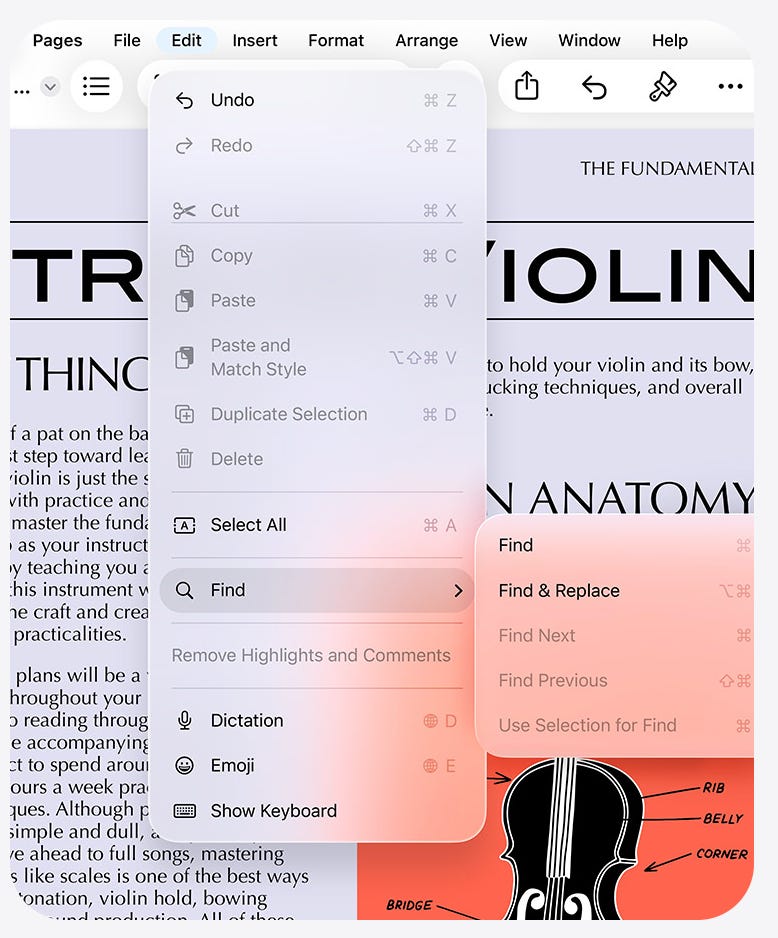Apple just announced its software updates for later this year. Last year, it was all about Apple Intelligence; something Apple amusingly named in order to continue its long-standing practice of not mentioning AI. But, of course, if you do that, you then carry the consequences. Put simply, Apple Intelligence turned out not to be that intelligent compared with what everybody else was doing. Add to that the fact that it vaporwared a type of contextually aware Siri and it all went south pretty quickly. Virtually nothing about last year’s announcement actually worked as intended. I’ve tried their visual intelligence and it is sadly useless compared with using, say, ChatGPT directly.
This year, Apple held back. And, of course, they have been roasted for it, with many pronouncing Apple’s doom yet again. I’m a long-time Apple booster (motto: “no one is going to be on their deathbed wishing they had waited to upgrade their iPhone”), so I tend to look at these things differently. My reaction was “what did you expect when last year was such a clusterf**k?”
I’m a leading-edge AI consumer. But that means I know something that everyone else in this industry seems to forget: most people couldn't care less about AI and are interested in stuff that works. Just because AI can do some stuff doesn’t mean that you should put that stuff into your products. Instead, what you should do is adopt technology when it will actually add value. Apart from last year, Apple has historically taken it slow in this regard. Let’s think about all of the things that it waited on alongside continual calls for its eventual doom: wireless charging, designable home screen icons, onscreen widgets and USB-C. And let’s compare it to the stuff they pushed through, such as Apple Pay, Touch ID, Face ID, and AirPods. And you know what the stuff they pushed through has in common. Each was packed to the hilt with AI. It’s just that they didn’t call it that.
What are we to take from this year’s announcements? We should take that Apple doesn’t think a lot of AI is ready for prime time. And moreover, even stuff that it did keep from last year (image generation and ChatGPT integration), isn’t front and centre this year. But what it is, is definitely AI strong. Let’s review:
Live translation
Visual intelligence straight from screenshots. Screenshots! The afterthought of mobile phones.
Natural language programming of shortcuts which is just an augment of Siri suggestions which is the thing that knows which apps you want to use when.
Natural language tasks in Spotlight, which is basically an integration of Raycast.
Call screening
Call Assist, which listens for hold music and calls you back when you are off hold!
Contextually aware Apple Watch apps.
All of this is made possible by adopting AI. All of this is useful. The only thing that may be hokey is that AI trainer thing on Apple Watch, but that may be just me. The point is, this is AI, but it is AI to specific ends. In other words, this is AI that people might actually use. Add to that that it could mostly be run from an on-device foundational model, and there are some significant strategic choices packed in here.
The most interesting announcements were, however, with regard to AI assistance on coding. Apple mostly relies on a specialised language called Swift. The problem is that this language is far less prevalent than other languages, and so LLMs are less helpful in building apps with it. To compete, Apple needs to work out how to close that gap. And it did do that, announcing more tools in X-Code and the ability to use whatever foundational model a coder wants. But the demo was underwhelming in the ‘vibe coding’ sense. There was no — create a whole app with a single prompt — thing. I would have liked that. But I suspect that is the point. Apple don’t want people creating apps with a single prompt. That is likely because those apps aren’t great. And, therefore, they will add little to the ecosystem. Apple has always been cautious on ecosystem quality, and it is not unreasonable to conjecture that this is what they are thinking here, too.
Lest I be too Apple-bullish, I had to LOL when I saw this yesterday:
The iPad is now a full-on Mac but with a touchscreen. 10 years after Microsoft’s Surface and trying to do anything but make it a Mac, the iPad is basically a Mac. This is hilarious to me. This has nothing to do with AI but everything to do with the downside of taking it slow and trying to impose a vision on the world. Sometimes, it just doesn’t happen.






